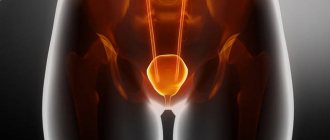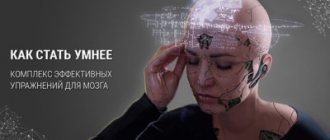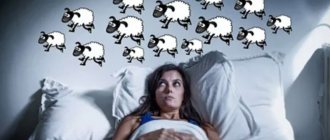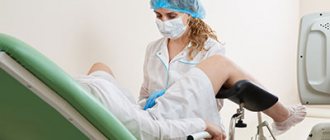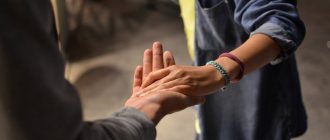Causes and mechanisms of development
Most often, a bladder infection is caused by bacteria that are usually found in the intestines. Cystitis or inflammation of the bladder is one of the common problems of the urinary system in children. Sometimes doctors use the more general term urinary tract infection (UTI) if it is impossible to accurately determine that only the bladder is affected, but there are signs of urethritis and pyelonephritis.
Bladder infections affect approximately 3 in 100 children each year. Infants under 12 months of age are more likely to get UTIs than older children. During the first few months of life, UTIs are more common in boys than girls. By age 1, girls are more likely to develop a UTI than boys, and girls continue to be at higher risk throughout childhood and adolescence.
Before contacting a specialist, answer the following questions
1. Do you experience frequent urination (>8 times during the day, >1 time at night)? 2. Do you have urgent (sudden) urges that are difficult to control? 3. Do you experience involuntary urinary discharge? 4. Do you use urological pads? 5. Do you have neurological or other diseases that can affect bladder function (consequences of stroke, neuropathy due to diabetes mellitus, osteochondrosis, herniated discs)? 6. Have you had brain/spinal cord or pelvic surgery? 7. Do you have inflammatory diseases of the genitourinary area that are difficult to treat with antibiotics? 8. Are there any discomfort or pain in the bladder, genitals, or perineum?
If you answered yes to 2 or more questions, you should contact a specialist.
Which children are more likely to develop a bladder infection?
Girls are much more likely to develop bladder infections than boys, except in the first year of life. Among boys under 1 year of age, those who have not had their foreskin removed (circumcised) have a higher risk of bladder infection. However, most uncircumcised boys do not develop a bladder infection.
Typically, any medical condition or habit of holding urine in a child's bladder for too long can lead to infection. Other factors that may increase your chance of developing cystitis include:
- overactive bladder, a treatable condition that often goes away as the child gets older;
- incomplete emptying of the bladder;
- waiting too long to urinate;
- constipation—fewer than two bowel movements per week or hard stool that is painful or difficult to pass;
- Vesicoureteral reflux (VUR) is the backflow of some urine from the bladder towards the kidneys during urination;
- A narrowing of the urethra is a problem that restricts the normal flow of urine, such as a stone or a duct that is too narrow (stricture). In some cases, it may be due to a birth defect;
- violations of hygiene rules, defects in caring for a small child;
- family history of cystitis.
Among teenage girls, those who are sexually active are more likely to develop bladder infections. Due to their anatomy, girls are much more likely to develop a bladder infection than boys.
Girls have a shorter urethra than boys, so bacteria have a short distance to travel to reach the bladder and cause an infection.
In girls, the urethra is located closer to the anus, a source of bacteria that can cause a bladder infection.
NEUROGENIC BLADDER DYSFUNCTIONS IN CHILDREN
The basis for urinary dysfunction, one of the most common reasons for children's visits to nephrological practice, is, as a rule, functional disorders of the mechanisms of storage and emptying of the bladder without underlying neurological and traumatic damage. These conditions can cause damage to the upper parts of the urinary system, including the development of irreversible kidney disease, and therefore require an integrated approach both in terms of clinical and instrumental examination and treatment tactics.
Impaired mechanisms of accumulation and emptying of the bladder without predisposing neurological and traumatic injuries are generally responsible for dysuria, a most common cause of children's referral in nephrological care. These conditions may cause upper urinary diseases, even by causing irreversible renal changes since they require a comprehensive approach to be used both in clinical and instrumental studies and treatment.
IN AND. Kirillov, professor. Department of Childhood Diseases, Moscow Medical Dental Institute N.G. Kireeva, resident doctor. Moscow City Children's Hospital of St. Vladimir
Prof. VIKirilov, Department of Childhood Diseases, Moscow Medical Stomatological Institute NGKireyeva, Registrar, Saint Vladimir City Children's Hospital, Moscow
Due to the unclear etiology of functional bladder disorders and the frequent lack of instrumental confirmation, a wide variety of terms are used to designate them: dysfunctional urination syndromes, non-neurogenic neurogenic bladder, subclinical neurogenic bladder, occult neuropathic bladder, etc. Many urinary dysfunctions are based on at least Most of the factors that can lead to damage to the upper urinary tract are insufficient coordination of the activity of the detrusor, bladder neck or external sphincter. These disorders occur either alone or in combination and often lead to increased intravesical pressure without obvious neurological underlying pathological processes.
Pathogenesis
Urination is a complex act, and its mature mode includes the coordinated function of a number of muscle formations, when volitional contraction of the detrusor is accompanied by relaxation of the external sphincter with emptying of the bladder under relatively low pressure [1]. In newborns and children in the first months of life, urination is involuntary, with the closure of reflex arcs at the level of the spinal and midbrain. During this period, the functions of the detrusor and sphincter are usually well balanced. As the child grows during the formation of an adult urination pattern (by 2, 5 – 3 years) [1], 3 factors are important. The first is an increase in bladder capacity (6 times) with a decrease in the frequency of urination; the second is the acquisition of control over the sphincter and other urethral mechanisms responsible for the initiation and cessation of miction; the third is the appearance of inhibition of the urinary reflex, which is carried out by inhibitory cortical and subcortical centers. Before this milestone, a distinctive feature of the maturation of the act of urination is an increase in intravesical pressure during the accumulation phase compared to older children. From the age of 1.5 years, most children acquire the ability to feel the filling of the bladder [2]. Cortical control over subcortical centers is established in the age period between 3 and 5 years [3]. In this regard, most cases of urinary dysfunction occur between the ages of 3 and 7 years. Rice. 1. Clinical symptom complexes of neurogenic bladder dysfunctions
The most common type of bladder dysfunction, an unstable bladder, is caused by the persistence of uninhibited detrusor contractions due to delayed maturation of the voiding (inhibitory) center in the cerebral cortex or reticulospinal tracts. A possible cause of this pathological type of urination is perinatal encephalopathy, as well as one of its outcomes - cerebral palsy, in which detrusor hyperreflex may be the only manifestation. A certain adverse effect of estrogens on the urodynamics of the upper and lower urinary tracts is emphasized. In particular, hyperreflexia in girls with an unstable bladder is accompanied by an increase in estrogen saturation, which causes an increase in the sensitivity of M-cholinergic receptors to acetylcholine [4]. This explains the predominance of female children in the total group of patients with urinary disorders of a functional nature.
| Table 1. Classification of neurogenic bladder dysfunctions | |
| Dysfunctions | Manifestations |
| Lungs | daytime frequency syndrome stress incontinence urinary incontinence when laughing nocturnal enuresis |
| Medium-heavy | · lazy bladder syndrome (large hypotonic bladder, detrusor hyporeflexia, rare urination) · unstable (hyperreflexive) bladder (persistent infantile bladder, immature hypertension-detrusor hyperreflexia) |
| Heavy | · Hinman syndrome (non-neurogenic neurogenic bladder, detrusor-sphincter dyssynergia · Ochoa syndrome (urofacial syndrome) |
In conditions of insufficiently inhibited automaticity of the bladder in the absence of adequate relaxation of the external sphincter, an increase in intravesical pressure occurs. Such dyssynergia is also possible in cases where a child, against the background of hypertonicity of the bladder, tries to stay dry through volitional efforts. In this situation, there is a possibility of developing failure of the closure mechanism of the ureterovesical anastomosis, which under normal conditions provides anti-reflux protection [5]. The resulting vesicoureteral reflux (VUR) represents the main danger of neurogenic dysfunction in relation to damage to the upper urinary tract.
| Table 2. Diseases with which it is necessary to make a differential diagnosis of nocturnal enuresis as a monosymptomatic condition | |
| Enuresis is associated with polyuria | · diabetes mellitus · diabetes insipidus · renal tubular acidosis · chronic renal · failure · acute pyelonephritis |
| enuresis without polyuria | · posterior urethral valves · inflammatory processes in the external genitalia · acute and chronic cystitis · helminthic infestations |
Taking into account the high probability of VUR being caused by neurogenic bladder dysfunctions, they are increasingly coming to the conclusion of conservative management of patients with reflux using anticholinergics and measures that improve urodynamics. Such tactics significantly increase the rate of resolution of VUR in children of the first years of life and improve the outcomes of antireflux operations [5, 6]. S. Greenfield and J. Wan [7] suggest an average follow-up period for VUR of 4–5 years (the age at which the adult urination pattern develops), after which, if it persists, surgical intervention should be undertaken.
| Table 3. Clinical signs of Hinman syndrome |
| · urinary incontinence at night and during the day · chronic constipation and encoprosis · recurrent UTI · absence of anatomical anomalies of the upper and lower urinary tract, as well as neurological pathology · mental status features: lack of individuality. Unfavorable psychological environment · decreased nitrogen excretory function of the kidneys with the development of chronic renal failure. Arterial hypertension · radiographic changes: ureterovesical obstruction, VUR, dilatation of the upper urinary system, scars in the kidneys, secondary shrinkage of the kidney; positive influence of education, suggestive therapy and bladder training · failure of reconstructive surgery |
Another possible serious consequence in conditions of high pressure in the bladder is hydronephrosis, the development of which is explained by constriction of the vesicourethral segment against the background of detrusor hypertrophy [8]. The loss of the functional integrity of the detrusor, bladder neck and external sphincter is the cause of dysuric disorders (in particular, urinary incontinence), the type and nature of which is determined by the dominant activity of these muscle formations. Neurogenic dysfunctions of the bladder are aggravated by urinary tract infections (UTIs) of any location. At the same time, they can initiate some variants of urinary dysfunction [9]. Thus, this pathology can only be accompanied by urination disorders that do not cause serious deviations in the child’s health and only cause a feeling of discomfort. However, more severe consequences are potentially possible (Fig. 1).
Classification
Without in any way detracting from the merits of the classification of neurogenic bladder dysfunctions presented in the excellent monograph edited by M.D. Javad-Zadeh and V.M. Derzhavin [10], it should be noted that it is based on purely functional characteristics, the assessment of which is carried out using special methods (at least cystometry). There is no doubt about the need to use tests to study urodynamics in patients with urinary disorders in a number of cases. However, in general clinical practice, including nephrology and urology hospitals, technologies for detailing bladder functions are usually absent.
| Table 4. Diagnostic measures for urinary dysfunction |
| Required · Daily rhythm of spontaneous urination (“urination profile”, “urinary diary”) Ultrasound examination Urine examination, including bacteriological methods Assessment of urodynamics of the lower urinary tract using urofluometry, cystometry, urethral profilometry, electromyography* Electoral (according to indications) · Vaccination cystography · Cystoscopy · Urography · Blood pressure measurement · Study of concentration and nitrogen excretory function of the kidneys** Vaccination cystography Cystoscopy Urography Blood pressure measurement Study of the concentration and nitrogen excretory function of the kidneys** *If it is impossible to use all of these methods, preference should be given to retrograde cystometry. **Supplemented by assessment of urinary excretion of albumin and low molecular weight proteins if these methods are available. |
In addition, this classification does not imply the division of variants of urinary dysfunction into threatening (in relation to damage to the overlying parts of the urinary system) and significantly milder monosymptomatic conditions with only dysuric disorders. Identification of these options based on the clinical symptom complex allows us to determine the scope of diagnostic procedures. The attractiveness of Y. Homsy's classification [11] lies in the division of bladder dysfunctions by severity, based on the likelihood of involvement of the upper urinary system. In addition, the functional integrity of detrusor and external sphincter activity is taken into account. This approach, in our opinion, is closest to practicing pediatricians (Table 1).
Rice. 2. Cystometric indicators. The first + marks the first urge to urinate, the second + - imperative urge
| a – healthy child (11 years old). The volume of retrogradely administered fluid (V) and pressure in the bladder (P) are within age standards (V+ = 146 ml, V++ = 238 ml; P+ = 8.2 cmH2O, P++ = 12.7 cmH2O). There are no significant pressure drops in the bladder during its filling, which characterize the degree of adaptation processes (A+ = 88%, A++ = 79%); | |
| b – sick child (5 years old) with a hyperreflexive non-adapted bladder. Low filling volume at the first (V+ = 7 ml) and imperative (V++ = 65 ml) urge. Increased pressure in the bladder (P+ = 36.5 cmH2O, P++ = 29.1 cmH2O). Significant fluctuations in intravesical pressure in the accumulation phase (A+ = –17%, A++ = 23%). |
Clinic
Daytime Frequency Syndrome (DFMS).
It was first described by S. Koff and M. Byard in 1988 [12].
Clinical manifestations include the sudden appearance of a frequent urge to urinate (after 15–20 minutes). Mictation is painless, and urodynamic examination does not reveal significant abnormalities. This symptom complex can persist from 2 days to several months and usually disappears spontaneously, at the same time yielding to anticholinergics. Stress incontinence.
A rare variant of urinary dysfunction, which manifests itself in girls of puberty when they strain while performing gymnastic exercises.
Typically, the amounts of urine missed are very small. Prevention of this mild dysfunction comes down to emptying the bladder before physical activity. Urinary incontinence when laughing.
It is common among prepubertal and pubertal girls and is sometimes accompanied by complete emptying of the bladder.
Urodynamic studies rarely reveal uninhibited contractions of the bladder (hyperreflex bladder). This self-limiting condition may be responsive to anticholinergics or sympathomimetics. Nocturnal enuresis.
A monosymptomatic condition, 3 times more common in boys and apparently associated with a disruption in the maturation of cortical mechanisms that provide voluntary control of the urination reflex. Primary enuresis (in the absence of a period of urinary retention at night) is most often caused by perinatal encephalopathy. The pathology can be secondary in nature after emotional stress, against the background of pain, fatigue, intoxication in severe somatic and infectious diseases.
| Table 5. Functional characteristics of neurogenic bladder dysfunctions |
| · Hyper-reflex bladder - non-adapted* - adapted* · Normoreflex bladder - non-adapted* · Hypo-reflex bladder - non-adapted* - adapted *Including postural. |
Instrumental examination only in rare cases reveals hyperreflexia of the bladder, especially at night. However, episodes of enuresis do not coincide with cystometric indicators. Nocturnal enuresis is rarely accompanied by VUR, the frequency of which increases significantly in the case of a combination of night and daytime urinary incontinence. Before starting therapy, it is necessary to exclude a number of pathological conditions that can occur with enuresis (Table 2). Currently, desmopression (desamino-D-arginine vasopression - DDAVP) has been used to treat enuresis due to the established connection of this condition with a slowdown in the formation of normal circadian levels of antidiuretic hormone (ADH) secretion. Replacement therapy with this drug reduces the incidence of enuresis in children with ADH deficiency. However, it must be emphasized that DDAVP does not cure enuresis, and often its effect does not exceed the duration of therapy. In addition, the long-term results of such treatment have not yet been assessed. Complex therapy for nocturnal enuresis, presented later in the article, gives positive results in 60–80% of cases. Lazy bladder syndrome.
It is more common in girls and is characterized by rare urination every 8 to 12 hours, which may be interspersed with urinary incontinence.
In this case, constipation is often observed, and prolonged retention of urine in the bladder leads to the development of infection of the lower parts of the urinary system. Urination in this category of children requires additional effort from the muscles of the anterior abdominal wall, but even under these conditions it is often intermittent and is not accompanied by complete emptying of the bladder. Etiologically, infrequent urination may be behavioral in nature, or an underlying clear deficiency of detrusor activity (hyporeflexia). There are no signs of bladder outlet obstruction. A feature of the treatment is to ensure frequent urination (every 2 hours), and for complete evacuation of urine - double urination. In case of large amounts of residual urine, periodic catheterizations are recommended. In rare cases, this dysfunction is combined with ectasia of the upper urinary system. Unstable (hyper-reflex) bladder.
The most common urinary dysfunction is a pathology that is caused by urodynamic disorders.
It is associated with a slowdown in the disappearance of uninhibited contractions of the bladder. The automatic mode of operation that expels urine from the bladder can be hampered by contractions of the external sphincter, voluntary control of which is established in early childhood. In particular, a similar situation arises when a child wants to stay dry and refrain from urinating. This vaguely resembles urodynamic disorders with posterior urethral valves. Table 6. Therapeutic measures for neurogenic bladder dysfunctions
| Type of neurogenic dysfunction | Urination according to schedule | Periodic catheterizations* | Vitamin therapy | Anticholinergics | Psychotropic and sedatives | Antibacterial prophylaxis*** | Physiotherapy*** | Other methods |
| SDChM | – | – | – | +** | – | – | – | – |
| Urinary incontinence when laughing | – | – | – | +** | – | – | – | – |
| Nocturnal enuresis | – | – | + | + | + | – | + | Desmopressin** |
| Lazy Bladder Syndrome | + | + | + | – | – | – | + | M-cholinomimetics (aceclidine) Laxatives |
| Unstable (hyper-reflexive) bladder | + | + | + | + | + | + | + | Biofeedback |
| Hinman syndrome | + | + | – | + | + | + | + | Biofeedback Laxatives Psychotherapy |
| Ochoa syndrome | + | + | ? | + | ? | + | ? | ? |
| *With a large amount of residual urine and/or exacerbation of UTI due to VUR. **Alternative indications. ***For UTIs to prevent relapses. ****Decoding in the text. ? no data on effectiveness. | ||||||||
Thus, an unstable bladder creates conditions for increased intravesical pressure, which, in turn, can cause the occurrence of unilateral or bilateral VUR (in 30–50% of patients), often with the development of reflux nephropathy. This category of children usually does not have urinary incontinence; there is often obstruction of the ureterovesical segment, leading to dilation of the ureter and pelvis [8]. These variants of unstable bladder, occurring with severe detrusor hypercontractility, are observed in children of various age groups, including the first months of life. This group of patients is often not inferior to treatment with anticholinergics. In 60–70% of children, the activity of the detrusor prevails over the resistance of the external sphincter, and this dysfunction is manifested by frequent imperative and/or painful urges, involuntary urination, and nocturnal enuresis. Regardless of the variants of hyperreflexia, recurrent UTI is common. In most cases, anticholinergics, forced urination, and periodic catheterizations cause resolution of VUR or help reduce its severity [5, 6, 13]. Hinman syndrome.
This symptom complex was first described by F. Hinman and F. Bauman in 1973 [14] and is the most severe variant of detrusor-sphincter dyssynergia.
The clinical picture is presented in table. 3. This rather rare pathology is unique in relation to the development of irreversible changes in the kidneys against the background of functional disorders of the act of urination, when there are no mechanical signs of obstruction, which are the main causes of nephrosclerosis in pediatric practice. In this case, the resulting obstruction is caused by insufficient relaxation of the external sphincter when attempting to urinate, which is confirmed by a decrease in urine flow rate, an increase in emptying time, increased or decreased intravesical pressure, the presence of residual urine, and a large bladder with thickened walls during urodynamic studies [15]. The participation of a psychological component in the development of this dysfunction is assumed, taking into account the characteristics of the mental status and unfavorable family history (alcoholism, mental trauma, lack of education, etc.) in this category of patients. Psychotherapy in children and families can often improve urodynamics [15]. D. Varlam and J. Dippell [15], observing 9 girls with Hinman syndrome for 5 years, found high creatinine levels in 8 of them with the development of end-stage renal failure in 1 case. 5 children had arterial hypertension (including hypertensive crisis). A 2-stage management of this category of patients is indicated. The first (symptomatic) is aimed mainly at normalizing urodynamics and includes periodic catheterization of the bladder, frequent urination using the biofeedback method, anticholinergics, laxatives, antimicrobial prevention of UTIs, as well as diversion of urine from the pelvis with hydronephrosis. R. Gonzalez and A. Mikael [9] recommend the use of diazepam (seduxen) to relax the sphincter. The second stage (etiological) consists of carrying out suggestive therapy and educational measures (hygienic skills). Ochoa syndrome (urofacial syndrome).
Described in Colombia, and its frequency in other countries is not yet known. A synonym for this pathology is urofacial syndrome, caused by an inversion of facial expression when laughing, creating the impression of screaming or crying. There is a hypothesis that explains the relationship between facial expression and bladder dysfunction. It lies in the assumption that the urinary centers and the facial nerve are close to the brain stem, and disturbances in this area may affect some organ functions. This symptom complex has many common features with Hinman syndrome. The age of patients ranged from 3 months to 16 years. An autosomal recessive type of transmission is assumed [16]. The clinical picture is characterized by daytime and/or nocturnal enuresis, chronic constipation, recurrent UTI, high incidence of VUR and ureterohydronephrosis (due to functional ureterovesical obstruction) [17]. Ochoa syndrome poses a risk of developing hypertension and chronic renal failure. Cystometric studies reveal uninhibited contractions of the bladder and a large amount of residual urine. The treatment strategy for urofacial syndrome is similar to Hinman syndrome.
Diagnostics
The scope of diagnostic procedures includes mandatory measures, which can be limited to in the presence of mild urination disorders, as well as special methods according to indications (Table 4). The complex of the latter makes it possible to exclude the prognostically unfavorable consequences of a neurogenic bladder (VUR, ectasia of the upper urinary system, arterial hypertension, decreased partial renal function), as well as primary diseases that may be accompanied by urination disorders (ectopic ureteral orifice, bladder outlet obstruction). Thus, a situation often arises that requires a comprehensive examination of the child including instrumental methods (including those usually used in urological practice). This refers primarily to the assessment of the urodynamic function of the lower urinary tract based on urofluometry, cystometry, profilometry and electromyography. This can be done using the “Relief” device (Russia), whose own experience in using it at the St. Vladimir Children’s City Hospital began in 1994. This device allows you to evaluate not only the functional variants of dysfunctions [10], but also to eliminate mechanical obstacles in the urethra. Based on a study of urodynamics, a classification of neurogenic bladder dysfunctions was proposed (Table 5) [10], the variants of which are presented in decreasing order of frequency. The concept of hyperreflexia refers to increased excitability of the spinal micturition arch. The adaptability of the bladder is its ability to maintain the pressure level at the minimum possible when a unit volume of fluid is received. On the contrary, an unadapted (uninhibited) bladder is characterized by an inadequate increase in pressure, disrupting the relationship between it and volume. Urodynamic disturbances that manifest themselves in a sitting or standing position are classified as postural. In Fig. Figure 2 shows the results of assessing urodynamics in cystometry mode in a healthy child (a) and with the most common dysfunction - a hyperreflexive non-adapted bladder (b).
Treatment
Treatment of neurogenic bladder dysfunction is often a complex task, requires complex therapy and requires differentiated tactics (Table 6). General events.
A protective regime is recommended with the elimination of traumatic situations, additional sleep (1–2 hours), avoidance of vigorous games before bedtime that cause nocturnal enuresis, and walks in the fresh air.
If there is a residual background, clinical observation is carried out jointly with a neurologist. Urostasis in the bladder requires periodic catheterizations, as well as urination according to a scheduled schedule (in the case of a hyporeflex bladder with double or triple emptying). Vitamin therapy.
Vitamins of group B (B1, B2, B6), PP, A and E in age-specific dosages in combination with possible parenteral administration.
Anticholinergics.
Selectively for hyperreflexia (one of the drugs): bellataminal - 1/2 - 1 tablet 2 times a day;
oxybutynin - in children over 5 years old, 1 tablet (5 mg) 2 times a day (3 times with the last dose at night for nocturnal enuresis); melipramine - 0.02 - 0.05 g 1 time at night or 0.01 - 0.025 g at 4 pm and 8 pm. The therapeutic dose is reached gradually, starting from 0.01 g. In addition to the anticholinergic effect, it has myotropic antispasmodic and antidepressant activity ; atropine - 0.05 - 0.5 mg 1 or 2 times a day. To predict the effectiveness of these drugs, an atropine test is used, the positive results of which (improved urodynamic parameters 30–40 minutes after subcutaneous administration of atropine) are an indication for the prescription of anticholinergics. Agents that normalize metabolic processes in the central nervous system Amino acids:
glutamic acid - 0.25 - 1 g 2 times a day;
glycine – 0.05 – 0.1 g 3 times a day; Nootropics:
piracetam - up to 5 years - 0.2 g 3 times a day, over 5 years - 0.4 g 3 times a day or 20% solution, 8 ml 2 times a day;
picamilon – 0.01 – 0.025 g 2 times a day; pantogam - 0.25 - 0.5 g 3 times a day. The duration of courses of vitamin therapy, anticholinergics, amino acids, nootropics is 1–1.5 months, followed by 1–2 repetitions with an interval of 4–6 weeks. To eliminate a large volume of drugs taken orally at the same time, their sequential administration is indicated. Sedatives
Preference is given to drugs of plant origin (valerian, motherwort), which are given in alternating courses of 2 weeks for 2 months. diazepam - 0.0025 - 0.005 g 2 times a day is recommended for Hinman syndrome, taking into account the muscle relaxant effect; librax – 1/2 – 1 tablet 2 times a day (including for nocturnal enuresis, when the 2nd dose is given before bedtime). The spectrum of action of the drug also includes an anticholinergic effect.
Antibacterial prevention of UTIs
In case of exacerbation of UTI of any localization, etiotropic therapy is prescribed, the effectiveness of which increases as urodynamics normalize. The method of antibacterial prophylaxis of UTIs during the period of remission is justified by the clear dependence of nephrosclerotic processes on the frequency of exacerbations, especially in the presence of PMR [18]. In addition, persistent infection in the lower urinary system can maintain bladder dysfunction. The range of preventive agents includes uroseptics in small doses: furagin (or other nitrofurans) - 1 mg/kg, co-trimoxazole - 12 mg/kg, nevigramon - 15 mg/kg. They are given once at night in long courses of many months. We have shown the effectiveness of anti-relapse prescription of immunocorrective drugs: levamisole (1 mg/kg) once a week, and for intercurrent diseases in a 3-day cycle, followed by once a week for 1 - 2 months; tactivin (2 mcg/kg) in a 3-day cycle followed by 3 injections with an interval of 1–2 days for concomitant diseases; sodium nucleinate (0.05 - 0.1 g 3 times a day) in courses of 1 - 2 months [19]. Other events.
Some features of the management of children depending on the type of urinary dysfunction
Classification of the disease in children
- Complicated (with the addition of peritonitis and other ailments) or uncomplicated.
- Acute (accompanied by inflammation of the sub- and mucous layers, in some cases – bleeding of the walls of the bladder) or chronic (morphological pathologies affect the muscle layer).
- Focal or total (according to the degree of prevalence).
- Primary (without abnormalities in the structure and dysfunction of the bladder) or secondary (occurs due to residual urine due to improper anatomy and functionality of the bladder). Source: K.V. Mitrofanov Cystitis in children // Mother and Child in Kuzbass, 2005, No. 1(20), pp. 3-9
Causes of inflammation:
- infection coming from the kidneys, urethra, pelvic and more distant organs;
- dysfunction of the bladder;
- incorrect structure of the organ;
- incomplete and/or irregular bowel movements;
- coli;
- Pseudomonas aeruginosa, Klebsiella, Proteus (rarer pathogens);
- viral infection (indirect effect - leads to improper microcirculation of urine, which becomes a good background for the disease);
- ureaplasma, chlamydia, mycoplasma (usually the cause of infection is chlamydia in parents, as well as lack of hygiene, visiting public baths, etc.);
- phimosis (relevant for boys);
- vesicoureteral reflux;
- fungus (for immunodeficiency).
Additional risk factors for cystitis:
- urolithiasis disease;
- foreign objects entering the bladder;
- therapy with drugs toxic to the kidneys, including cytostatics in oncology;
- invasive examinations on the urological profile;
- dysbacteriosis;
- infection with worms;
- various infectious diseases of the intestinal tract;
- a wide range of gynecological diseases;
- inflammatory and purulent processes;
- dysfunction of the endocrine system;
- radiation;
- hypothermia;
- failure to comply with basic personal hygiene standards; Source: https://www.ncbi.nlm.nih.gov/pubmed/26075187 Hanna-Wakim R, Ghanem ST, El Helou MW, Khafaja SA, Shaker RA, Hassan SA, Saad RK, Hedari CP, Khinkarly RW, Hajar FM, Bakhash M, El Karah D, Akel IS, Rajab MA, Khoury M, Dbaibo GS Epidemiology and characteristics of urinary tract infections in children and adolescents // Front Cell Infect Microbiol. 2015 May 26;5:45. doi: 10.3389/fcimb.2015.00045. eCollection 2015
- etc.
How does cystitis manifest in a child: main symptoms
The child has ways to protect himself from infection in the urinary tract. For example, urine leaves your baby's kidneys through the ureters and into the bladder. Bacteria that enter the urinary tract are expelled during urination. This one-way flow of urine prevents bacteria from infecting the urinary tract. Sometimes the body's defenses weaken, and bacteria ascend into the bladder, causing inflammation. If your child has symptoms of cystitis or has a fever for no clear reason, contact your doctor within 24 hours.
Cystitis often occurs in children, especially in girls (which is due to the structural features of the urinary tract). Immediate treatment of cystitis in a child can prevent kidney damage (pyelonephritis). It can develop due to an infection that spreads up one or both ureters. Kidney infections are very painful, can be dangerous and cause serious health problems, so it is best to start treatment as early as possible.
Signs of the disease in infants and children under one year of age:
- decreased appetite or complete refusal to eat;
- restlessness that increases when the child urinates;
- crying, nervous excitement or, conversely, lethargy and weakness;
- increased body temperature, up to fever;
- spasm of the urethral sphincter from the outside, urinary retention due to a developed reflex;
- change in urine: cloudiness, sediment, flakes, repulsive odor.
In older children, the symptoms are quite bright and pronounced. The main symptoms are pain in the lower abdomen, back or side, as well as an urgent need to urinate or frequent trips to the toilet. Some toddlers who are already potty trained or toileting lose control of their bladder and may wet the bed. Parents may also see drops of blood in the urine and/or pink colored urine.
It is important to know how cystitis manifests itself in young children. Babies may have more general symptoms such as fussiness, decreased appetite, crying, fussiness on the potty, or fever. Other symptoms of cystitis include:
- burning or pain when emptying the bladder;
- foul-smelling or cloudy urine;
- a sharp urge to urinate, and then the release of only a few drops of urine;
- high temperature;
- nausea or vomiting;
- diarrhea.
How to determine acute cystitis?
The disease manifests itself quickly, with a rapid increase in symptoms:
- the urge to empty your bladder every 20 minutes or more often;
- pain above the pubis, radiating to the perineum and intensifying when palpating the abdomen and even when the bladder is not full;
- difficulty passing urine, accompanied by stinging and pain;
- urinary incontinence;
- a few drops of blood after urinating;
- urge that does not lead to urination.
Chronic form of the disease
A secondary disease, which is characterized by a similar clinical picture during periods of exacerbation. Children experience discomfort in the pubic area, suffer from incontinence and noticeably increased frequency of urination. Source: Pigareva, N.A. Tsap Chronic cystitis in children: modern view on etiology, pathogenesis, clinical picture, diagnosis and treatment (literature review) // Russian Bulletin, 2012, vol. II, no. 2, pp. 32-37
Pediatric urology PEDUROLOGY.RU
Urinary disorders, manifested by frequent urination, urinary incontinence, including urgency, are common complaints in childhood. However, parents usually pay attention to these symptoms in children over 4-5 years old, considering such manifestations to be a feature of younger age. But that's not true.
Not only the problem of social maladaptation of a child with “wet panties” syndrome, but also severe infectious complications from the urinary system, as well as vesicoureteral reflux, which may accompany this condition, determine the relevance of the problem. Due to the fact that not only highly specialized specialists (urologists), but also general practitioners are involved in the process of diagnosing and treating urinary disorders, in 1997 P. Abrams and A. J. Wein introduced the term “Overactive Bladder” to facilitate diagnosis and treatment.
Bladder overactivity is a symptom complex characterized by 1) pollakiuria (frequent urination > 8 times during the day); 2) urgency (an unexpected irresistible (imperative) urge to urinate; 3) urgent urinary incontinence (an episode of involuntary loss of urine immediately following an episode of urgency); 4) enuresis (bedwetting); Pollakiuria is combined with a decrease in the effective volume of the bladder below standard values. The most important sign of pollakiuria, as a pathological symptom, is the absence of residual urine, which is established retrospectively during an instrumental examination (catheterization of the bladder or ultrasound examination after urination). Urgency is diagnosed when the patient complains of periodically appearing, irresistible desires to urinate. If a child cannot suppress the urge to urinate, urge urinary incontinence occurs. Enuresis is urinary incontinence at night. If all of the above symptoms are present, we can speak of a complete syndrome of urinary dysfunction.
AT WHAT AGE SHOULD OVERACTIVE BLADDER IN CHILDREN BE CONSIDERED A DISEASE? By the age of 4, most children develop a “mature type of urination”, characterized by: complete retention of urine day and night; · the ability to delay and interrupt, if necessary, the act of urination; · the ability to empty the bladder without a previous urge to urinate; · behavioral reactions accompanying the act of urination - the desire for privacy when the urge appears, etc. Normally, children 3-4 years old empty their bladder 5-8 times while awake; The average effective bladder volume ranges from 120 to 150 ml.
The volume of urination can be calculated using the formula: (30xage) +30 ml. Thus, we can talk about the formation of an OAB symptom complex in cases where in a child 4 years of age and older, the number of urinations and the effective volume of the bladder go beyond the normative indicators, and urination is uncontrollable to one degree or another. However, we must not forget that pathology begins at an early age, and therefore it is very important to know, even in children in the first months of life, how often the child urinates, what the portions of urine are (in infants, the study should be carried out according to international standards within 4 hours). The diagnosis of OAB is established using a comprehensive staged examination, including at the prehospital stage: -physical examination; -laboratory tests; -keeping a diary of urination and bowel movements. At the first stage of the examination, the child should be examined by a psychoneurologist, since even during the initial examination behavioral problems, hyperactivity and attention deficit syndrome, and delayed psychomotor development can be identified. During a physical examination, the lumbosacral spine is examined to identify malformations and phenomena of spinal dysmorphism: (hyperpigmentation, subcutaneous lipoma, buttock asymmetry, hypertrichosis), which is an indication for R-graphy of the lumbosacral spine or MRI, which will reveal bone markers of myelodysplasia, the presence of additional formations and will allow assessing the state of liquorodynamics. When collecting anamnesis, it is necessary to determine the presence of constipation and/or stool. It is mandatory to study perineal sensitivity and reflexes, as well as the tone of the anal sphincter. When examining the lower extremities, it is necessary to pay attention to the symmetry of the extremities and gait. An examination of the external genitalia is carried out to identify concomitant pathologies: cicatricial phimosis, epispadias, meatal stenosis, vulvitis, vaginitis. It is fundamentally important to confirm or exclude the presence of infectious complications. Clinical laboratory tests (general blood count, general urinalysis), microbiological research methods (bacteriological culture of urine to determine the sensitivity of microorganisms to antibacterial drugs) are mandatory. A method for identifying an overactive bladder at the first stage of the examination is keeping a diary of urination and defecation, since The pelvic organs are innervated by the same nerve structures, and these disorders are often combined. According to the terminology of the International Society for Urinary Continence in Children, a “urination and defecation diary” involves recording the number of urinations, the time of onset of the urge, the volume of urine excreted per urination, symptoms of incontinence and urgency, urine production at night, taking into account the volume of fluid taken and recording acts of defecation . Urination diary Frequency of urination: ─ increased (> 7/day) ─ decreased (< 3/day) Volume of urine excreted: ─ portions Volume of fluid taken ─ N = 25-30 ml/kg/day (for diabetes 75-100 ml/kg day) ─ distribution over time Cases of urinary incontinence: ─ frequency ─ intensity Urgency: yes/no Constipation/stooling: yes/no The study should be carried out within 14 days, or at least within 4-5 days, determining the time and volume of urination. In infants, a 4-hour test is performed with ultrasound monitoring of bladder filling and mandatory recording of the volume of residual urine after each urination. Urine portions can also be determined by weighing diapers. The absence of changes in urine tests in the presence of pollakiuria should alert the doctor, and changes in the nature of urination are indications for further examination and treatment. Data on the nature of urination, assessed by the rhythm of urination, are analyzed using a table for assessing urinary urgency syndrome proposed by E.L. Vishnevsky in 1997, in which the main symptoms of urination disorders are assessed by a certain number of points, depending on the severity of the disorders. Urinary Urgency Assessment Chart.
| sign | state | points |
| Urinary urgency | No Not every day Every day 1-2 times Every day several times | 01 2 3 |
| Urgent incontinence | No Not every day Every day 1-2 times Every day several times | 0 1 2 3 |
| Involuntary urination during night sleep (enuresis) | No Not every day Several times a month Several times a week Every night 1 time Every night several times | 0 1 5 10 15 20 |
| Diuresis from 18 to 6 hours (in relation to daily) | Up to 40% 41-50% 51-60% 61-70% More than 71% | 0 1 2 3 4 |
| leukocyturia | No In urine analysis according to Nechiporenko In general urine analysis | 0 1 2 |
| Sign | Number of urinations per day | points |
| Urination rhythm | 5-8 9-10 11-12 13-14 15-16 17-18 19-20 20 or more | 0 1 2 3 4 5 6 7 |
Depending on the severity of urination disorders, 3 groups are distinguished: Group 1 - mild degree of urination disorders, total score 2-10. Group 2 - average degree of disorder, total score 11-20. Group 3 - severe urinary disorders, total score 21-30. Considering the high incidence and infectious complications and the development of vesicoureteral reflux with an overactive bladder, the damaging effect on the renal parenchyma and, as a consequence, the development of renal failure, a multidisciplinary approach to treatment tactics is necessary. Since the nature of OAB is polyetiological, treatment should be comprehensive, not symptomatic and aimed at restoring the act of urination as a whole.
Treatment of childhood enuresis.
The main methods of treatment are urotherapy, pharmacotherapy and isotherapy. The starting method in the treatment of OAB is urotherapy – a system of cognitive methods. Urotherapy means the elimination of behavioral disorders in a child, cognitive correlation, urination training in combination with the principle of biofeedback. The next stage of pathogenetically based treatment of OAB is pharmacotherapy (use, in particular, oxybutynin). But in children under 5 years of age, M-anticholinergics are not approved for use (and it is at this age that urinary disorders begin), and, in addition, 17-30% of children have intolerance to oxybutynin. Therefore, physiotherapy is of great importance in the treatment of OAB, both in the form of monotherapy (in children under 5 years of age) and in combination with pharmacotherapy. It is recommended to use thermal procedures (in particular ozokerite applications), sinusoidally simulated currents, as well as the use of modern types of energy (interference currents and laser therapy).
If you would like more information, please contact us or consult your doctor for specific diagnostic and treatment recommendations.
For many questions, an online consultation with a urologist is possible - https://pedurology.ru/index.php/on-line1
Diagnosis of pathology in children
If your child has symptoms of cystitis, contact your pediatrician immediately. Your doctor will order urine tests to check for bacteria. You need to collect urine in several ways:
- Older children can pee in a sterile cup.
- For younger children who are not toilet trained, a sterile polyethylene urine bag is used on the genitals to collect urine.
- For children who wear diapers, a tube (catheter) may be inserted into the urethra and bladder to collect a sample.
In the laboratory, they look at the sample under a microscope to determine if there are germs in the urine. Urine can also be cultured—a lab technician places the urine in a dish to see what bacteria grow in it. This can help your doctor pinpoint the germs that are causing your cystitis so he knows what medications to prescribe to kill them.
If your child has had multiple urinary tract infections or is diagnosed with chronic cystitis, the doctor may refer you to a nephrologist (kidney specialist) and do one or more of these imaging tests to look for problems in the urinary tract:
An ultrasound uses sound waves to identify any obstructions or other problems in the kidneys and urinary tract.
A voiding cystourethrogram, where fluid is injected into the bladder through a tube, is used to show any problems in the urethra or bladder when the baby urinates.
Nuclear scans use fluids containing small amounts of radioactive material to see how well the kidneys are working.
A CT scan, or computed tomography scan, is a high-powered X-ray that takes detailed pictures of the bladder and kidneys.
MRI, or magnetic resonance imaging, uses powerful magnets and radio waves to produce images of the bladder and kidneys.
Treatment methods
After determining the diagnosis, the doctor determines how to treat cystitis in children. For the treatment of acute and chronic cystitis in childhood, clinical recommendations have been developed that define a set of actions and medications for each case.
Mostly antibiotics are used. These medications kill bacteria. Children usually take them for 3 to 10 days (most often 7-10 days). Your doctor may do another urine test after your child finishes taking the medicine to see if the infection has cleared up. Always take the full course of medications, even if your child gets better. Stopping too early can make germs resistant to antibiotics and cause cystitis to recur.
Most UTIs go away in about a week. In some children, symptoms persist for several weeks. Contact your doctor if your child's symptoms do not begin to improve after 3 days of starting antibiotics or if they get worse.
If the child's condition is serious, hospitalization is possible, where doctors will decide how cystitis is treated depending on age and severity. Intravenous antibiotics and pain medications may be indicated if the baby is less than 2 months old or has vomiting or abdominal pain. The duration of treatment depends on:
- how serious the infection is;
- whether the child’s symptoms and signs of cystitis disappear;
- whether the child has recurrent bladder infections, vesicoureteral reflux, or another urinary tract problem.
Important! Only a doctor can help a child and completely cure him. Self-medication can lead to certain complications and aggravate the course of the disease.
Symptoms of the disease
The work of all organs and systems in the body is regulated by the nervous system, the bladder is no exception.
The disease is manifested by the following symptoms:
- frequent false urge to urinate;
- urinary incontinence of varying severity, caused by an unbearable urge to urinate;
- frequent urination;
- infrequent urination.
Symptoms of the disease can appear at any time of the day, at rest, during sleep, during various physical activities, tension in the anterior abdominal wall when coughing or laughing.
| Approximate norms of urination depending on age | |||
| Age | Volume of urine per day in milliliters | Number of urinations per day | Volume of urine per urination in milliliters |
| 0 - 6 months | 300 — 500 | 20 — 25 | 20 — 35 |
| 6 – 12 months | 300 — 600 | 15 — 16 | 25 — 45 |
| 1 – 3 years | 760 — 820 | 10 — 12 | 60 — 90 |
| 35 years | 900 — 1070 | 7 — 9 | 70 — 90 |
| 5 – 7 years | 1070 — 1300 | 7 — 9 | 100 — 150 |
| 7 – 9 years | 1240 — 1520 | 7 — 8 | 145 — 190 |
| 9 – 11 years | 1520 — 1670 | 6 — 7 | 220 — 260 |
| 11 – 13 years old | 1600 — 1900 | 6 — 7 | 250 — 270 |
| 14 years and older (adults) | 1500 — 1900 | 7 — 8 | 200 – 300 |
Prevention
Drinking enough fluids, practicing good hygiene and diaper use, wearing loose-fitting clothing, and treating cystitis-related health problems can help prevent UTIs in a child or teen.
It is important to avoid constipation. Hard stool can put pressure on the urinary tract and block the flow of urine, allowing bacteria to grow. Helping your child to have bowel movements regularly can help prevent constipation.
If your child has vesicoureteral reflux, a urinary tract structure, or an anatomical problem, see a pediatric urologist or other specialist. Treating these conditions can help prevent recurrent bladder infections.
Diabetes and other health problems can increase the risk of a bladder infection. Ask your pediatrician how to reduce your risk of developing a bladder infection.
Sources:
- K.V. Mitrofanov. Cystitis in children // Mother and Child in Kuzbass, 2005, No. 1(20), pp. 3-9.
- https://www.ncbi.nlm.nih.gov/pubmed/26075187 Hanna-Wakim R, Ghanem ST, El Helou MW, Khafaja SA, Shaker RA, Hassan SA, Saad RK, Hedari CP, Khinkarly RW, Hajar FM, Bakhash M, El Karah D, Akel IS, Rajab MA, Khoury M, Dbaibo GS. Epidemiology and characteristics of urinary tract infections in children and adolescents // Front Cell Infect Microbiol. 2015 May 26;5:45. doi: 10.3389/fcimb.2015.00045. eCollection 2015.
- A.E. Pigareva, N.A. DAC. Chronic cystitis in children: modern view on etiology, pathogenesis, clinical picture, diagnosis and treatment (literature review) // Russian Bulletin, 2012, vol. II, no. 2, pp. 32-37.
- Sh.Sh. Mametova. Modern aspects of diagnosis and treatment of cystitis in children // Bulletin of KAZNMU, 2012, No. 1, pp. 255-257.
The information in this article is provided for reference purposes and does not replace advice from a qualified professional. Don't self-medicate! At the first signs of illness, you should consult a doctor.
Prices
| Name of service (price list incomplete) | Price |
| Appointment (examination, consultation) with a pediatric urologist-andrologist, primary, therapeutic and diagnostic, outpatient | 1750 rub. |
| Consultation (interpretation) with analyzes from third parties | 2250 rub. |
| Prescription of treatment regimen (for up to 1 month) | 1800 rub. |
| Prescription of treatment regimen (for a period of 1 month) | 2700 rub. |
| Consultation with a candidate of medical sciences | 2500 rub. |
| Kidney ultrasound | 1700 rub. |
